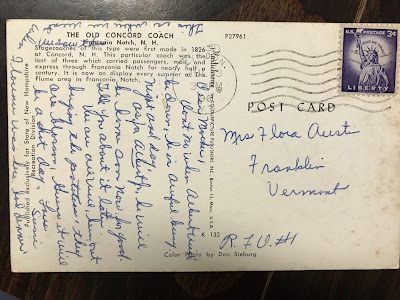Recently a friend and I were discussing the Book of Job, a part of the scriptures (or haftorah in Jewish tradition) that can make people very uncomfortable, because the main speaker in it, Job, has an argument with G-d that seems to leave him at a terrible disadvantage, without any just cause for it. This poem reflects on that ... and takes its title, "The Storehouses of Snow," from the ancient text. And, PS, the photo is from a earlier winter; our snow is not that deep at the moment, but check back with my photos on Facebook when Friday's storm is done!
The Storehouses of SnowFirst winter alone in the house on the ridge, wheremornings open gray and silver — when I follow the tracks(deer, fox, squirrel, a flock of turkeys) and search the treesthere’s more blue sky than I first realized, flaming and yearningoh how long, how deep does love root itself in the heart—it aches to touch, to clutch the answers. But:There’s a thing about blue sky. Sometimes I don’t realizetil the moment I lift the camera to the bare branches above,backdrop of tenderness with sparkles; silken, with cloud streakslook! without calling, two bluejays erupt and take wing.Paired, they do not leave this place in winter. Nor do I.Empty rooms echo, while the kettle hums, yesthe kitchen’s almost a safety zone, a place to make and tasteand the stacked dishes waiting to be washed proclaim“life is messy; choose life; go on, try it, try it, try it”wet-handed (soaped) I dry it. The dish. My cheek. Salt wet.Beware the living-room couch, with its loose comfortblowsy, ample, cushioned. Take a corner seat. Did youbring a book? This program with the sound muted nowwas one he liked. We had a little race to be the first to say“re-run!” and be correct. Sometimes people die and it’s notsomething you can prevent. Love can’t hold it back, althoughmy niece is worried that I seem sad. When she called, I was sittingby a window as the evening ripened: snow in the forecast.Shadows on snow are blue but sometimes purple; some pinkin surprising places. The storehouses of snow must be designedlike the bold striped houses of the Gaspé, blooming plum and orangeabove winter’s etched certainties. Imagine the winter breath of G-dthroat cleared with a rattling cough, pillars of ice rising.Grief is a clawed animal known to prehistoric soulsdigging like a sabre-toothed cat or dire wolftearing the flesh; opening the chest; releasing the arc of bonesdetermined to delve to the heart. Wrenching apart fiberpiercing each wanton cell with chemical injections of painerupting in coarse sobs, in wracked wailing, in screams. And then:nights alone. Salt rivers. Oceans of separation.How strange the new sun of mourning; fire from the lensas light flares from a disk of ice. Words that set sparkspaper smoking within a golden circle. Fingers that curvearound a mug of comfort. Yet not so fast! Rage, rage first,rage against the jaws of death, against hunger and want, againsthalf-empty bed, against table for one. Rage, I say! G-d shouts.Raw throat, scrubbed face, tumble of blame and rough words.The saw blade rasps in the ash branch; scrapes past bark, wrestlesfiber and core, pinches under the arched arm. Prunes back rash hopeassaults the life force, demands a rush of sap from the rootsswelling, rising, dripping (sweet not salt) down the gray bark.Let the storehouses of snow be opened. Blow, winter rages. Blowand rant and make the mountains kneel. Remind me how fierceis love itself; how clawed; how it bites until the lips intervenethe tongue turns loose and hands grasp. How the calendarnumbers the days of the season. Insists (shouting, roaring)on April. On yellow, gold, and green. Which are not (except at sunrise)present in the shadows on the snow.-- BK









































